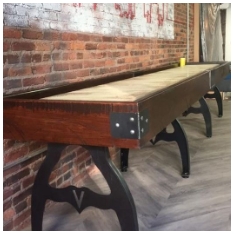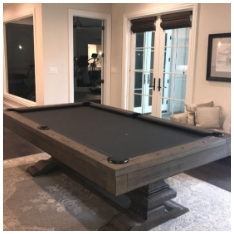When it comes to creating a recreational space at home, a pool table can be a fantastic addition. However, selecting the right size pool table is crucial to ensure that it fits seamlessly into your designated area. In this article, we will explore how to choose the right size pool table for your room, considering various factors to help you make an informed decision.
Understanding Pool Table Sizes
Standard Pool Table Dimensions
Pool tables come in various sizes, with standard dimensions typically ranging from 7 feet to 9 feet in length. Here’s a breakdown of common sizes:
- 7-Foot Pool Tables: Ideal for smaller rooms, these tables are great for casual play and are often used in home game rooms and bars.
- 8-Foot Pool Tables: A popular choice for home use, this size provides a good balance between playability and space requirements.
- 9-Foot Pool Tables: These tables are often found in professional settings and require more room for a comfortable play experience.

Importance of Room Size
Before selecting a pool table, it’s essential to measure your room. The dimensions of your space will significantly influence the size of the table you can accommodate. Ideally, you should leave at least 5 feet of clearance around the table for players to comfortably shoot without obstruction.
Measuring Your Space
- Determine the Area: Measure the length and width of your room. Be sure to include any furniture that may impact the available space.
- Calculate Required Clearance: For an enjoyable playing experience, add the table length to the required clearance. For example, a 7-foot table requires approximately 17 feet in length and 12 feet in width, considering clearance on all sides.
Choosing the Right Pool Table Size
Assess Your Needs
When choosing the right size pool table for your room, consider the following factors:
- Frequency of Use: If you plan to use the table frequently for social gatherings or games, opt for a size that accommodates your needs while allowing space for movement.
- Skill Level: Beginners may find smaller tables easier to play on, while experienced players might prefer larger tables that offer a more challenging game.
- Room Design: Consider the aesthetics of your room. A large table may overwhelm a small space, while a small table might look out of place in a larger room.
Style and Design Considerations
Your pool table's design should complement your room's overall style. Here are some design elements to think about:
- Table Color: Choose a color that matches or contrasts with your room's decor. Common options include classic green, blue, or even modern gray.
- Material and Finish: The material of the pool table can influence both its appearance and durability. Solid wood frames offer a classic look, while laminate finishes can provide a more modern feel.
- Accessories: Consider the type of accessories you want, such as cues, balls, and racks. Make sure they fit your chosen pool table's design.
Setting Up Your Pool Table
Choosing the Right Location
Once you've selected the right size pool table, it's essential to determine the best location within your room. Here are some tips:
- Avoid Corners: Placing the table in a corner can restrict movement and make it challenging to play. Center the table in the room to allow ample space on all sides.
- Lighting: Ensure your pool table is well-lit. Install overhead lighting to provide sufficient illumination for the playing surface.
- Temperature and Humidity: Choose a location that is not too hot or humid, as these conditions can warp the table's materials over time.
Installation Tips
Proper installation is key to ensuring the longevity and performance of your pool table. Here are some steps to follow:
- Level the Table: Use a level to ensure the playing surface is perfectly flat. This step is critical for fair gameplay.
- Secure the Legs: Ensure that the legs of the table are securely fastened and that the table is stable on the floor.
- Add Accessories: Once installed, add your accessories, such as the cue rack, ball storage, and other necessary items.
Maintenance of Your Pool Table
Regular Care
To keep your pool table in optimal condition, follow these maintenance tips:
- Clean the Surface: Use a soft cloth to clean the playing surface regularly. Avoid using harsh chemicals that could damage the felt.
- Check for Damage: Regularly inspect the table for signs of wear or damage. Address any issues promptly to avoid further problems.
Professional Servicing
Consider having your pool table serviced by a professional periodically. This can include re-felting the table, tightening loose parts, and ensuring that everything is in working order.
Conclusion
Choosing the right size pool table for your room involves careful consideration of several factors, including room size, personal preferences, and design elements. By taking the time to measure your space and assess your needs, you can select a pool table that enhances your recreational area and provides enjoyment for years to come. Remember, the right pool table will not only fit your space but also enhance the overall atmosphere of your home.





